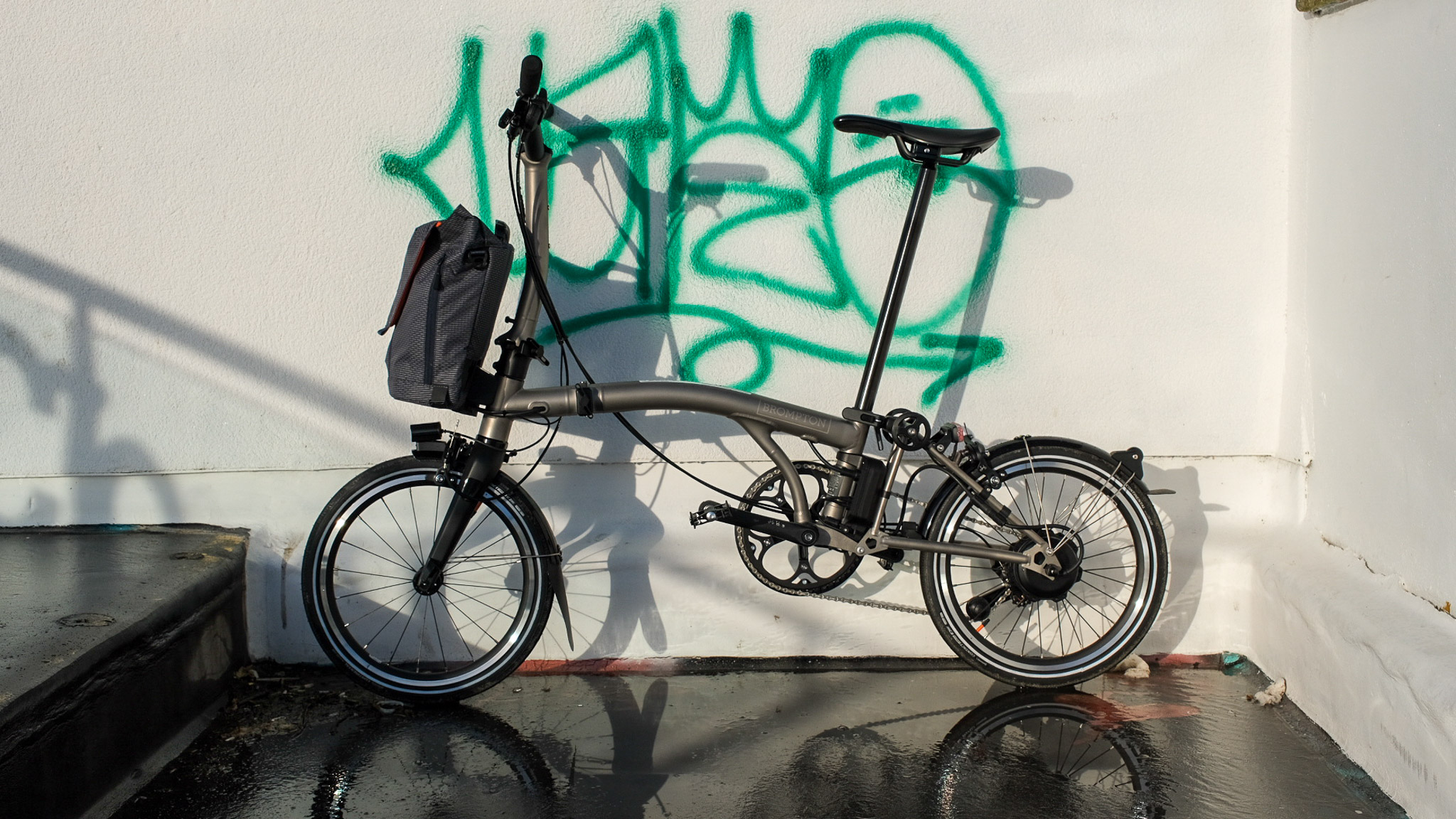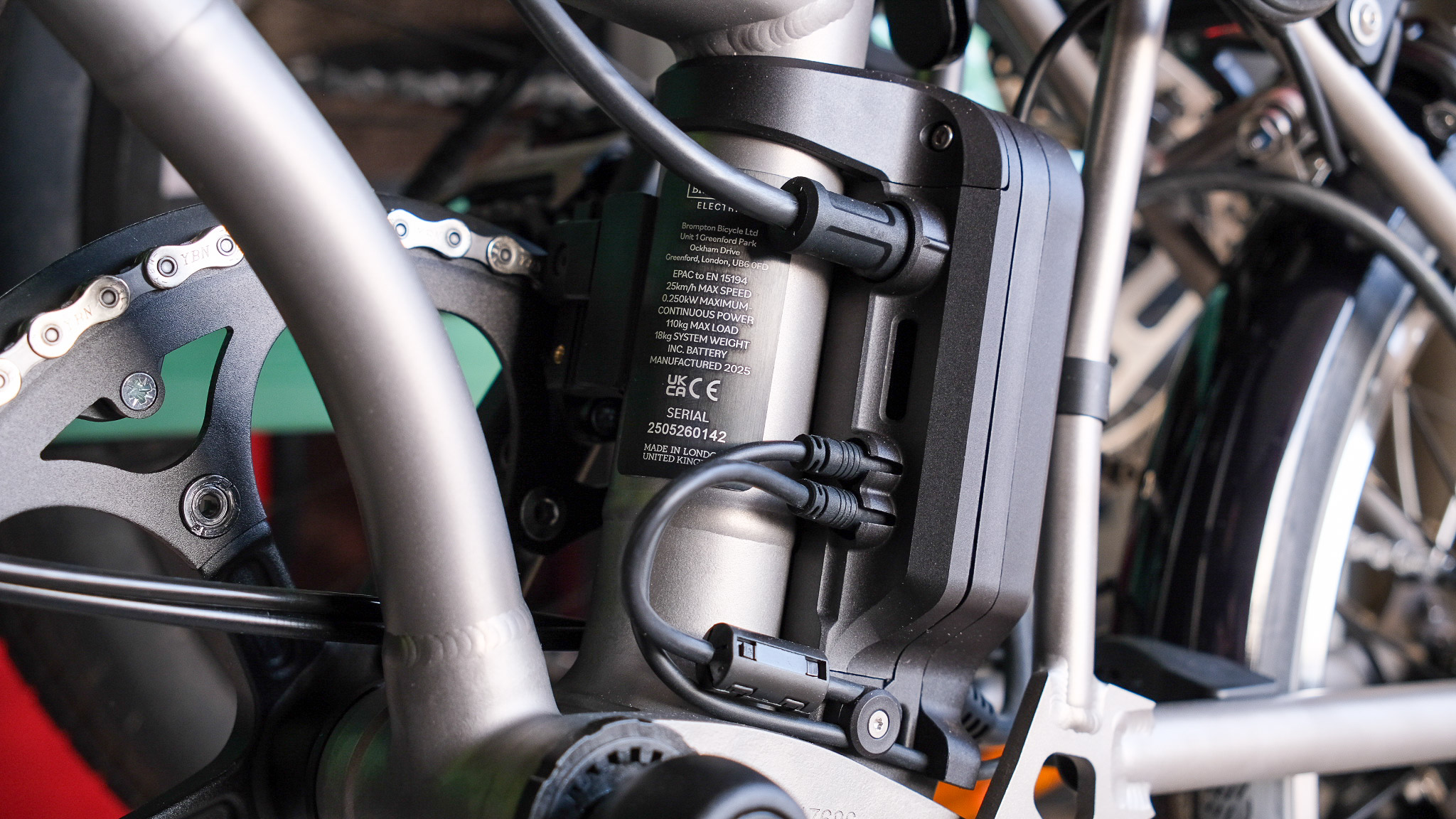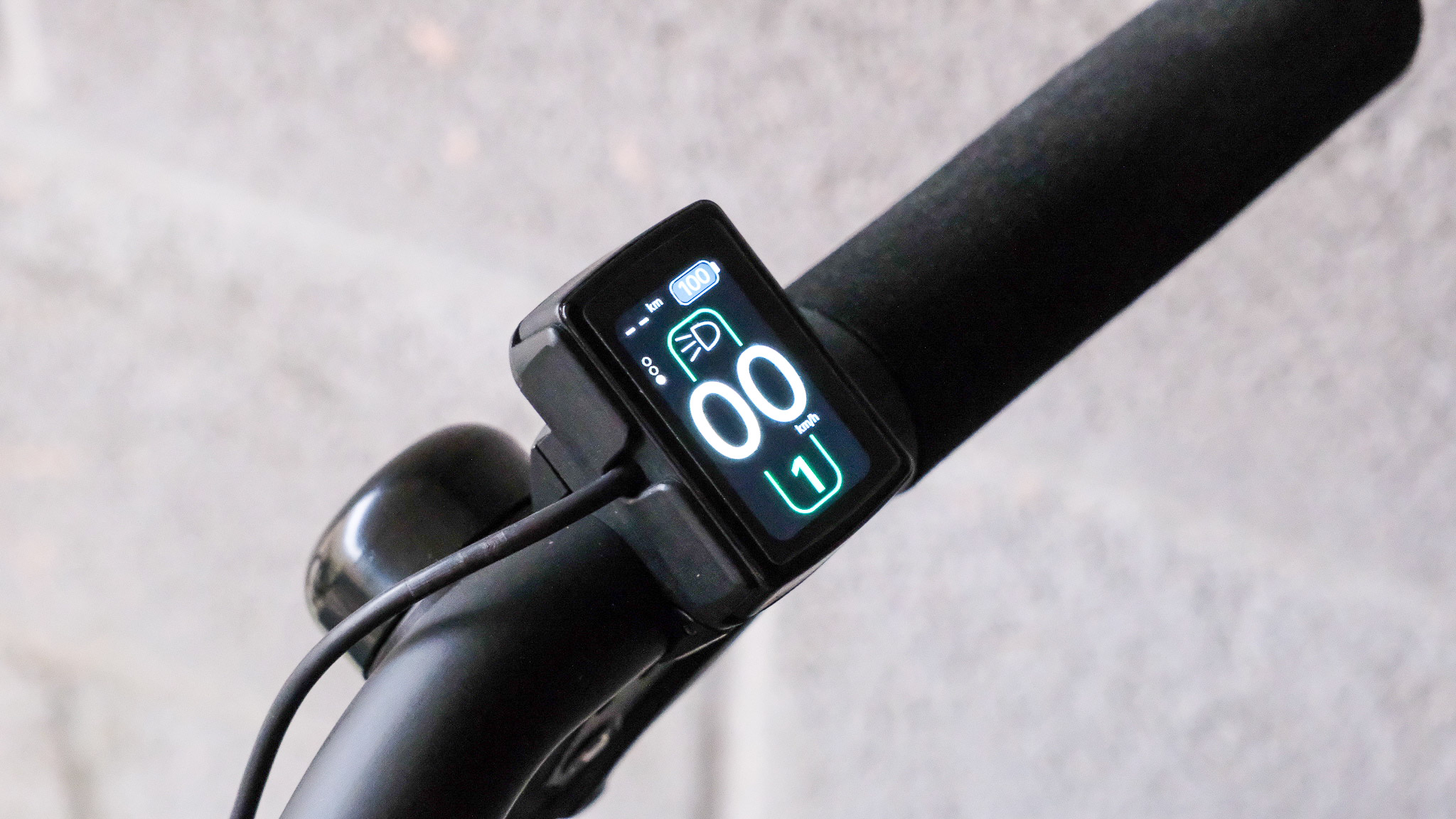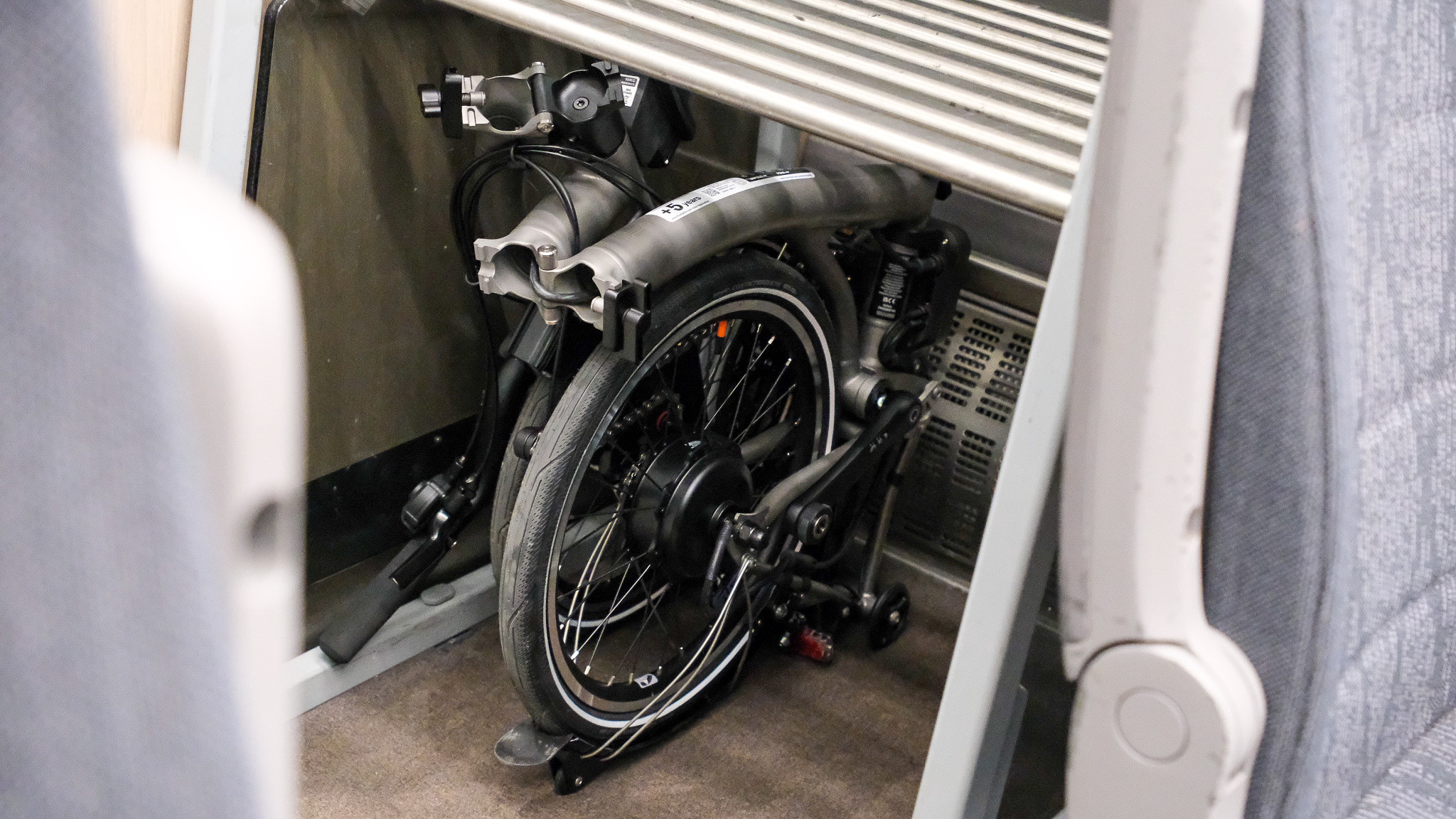Brompton Electric T Line review: The reinvention of a commuter icon
The lightest electric Brompton ever built proves the brand can still innovate, but refinement comes at a cost


The Brompton Electric T Line is an impressive feat of design: it feels ultra-light, beautifully balanced and distinctly premium. It’s a joy to ride and carry, but the heavy battery and high price make it more of a luxury commuter toy than an everyday essential. Brilliant but far from perfect.
-
+
Incredibly light for an e-bike
-
+
Beautiful titanium craftsmanship
-
+
Smooth, natural motor assist
-
+
Refined folding mechanism
-
-
Bulky battery pack
-
-
No frame size options
-
-
Small display
Why you can trust T3

The Brompton Electric T Line is a paradox in motion. It’s the lightest electric Brompton ever made, yet it’s also the most expensive. It feels familiar but completely re-engineered, refined yet frustratingly cautious.
For a brand that has built its legacy on doing one thing brilliantly (i.e. folding bikes), this titanium-and-carbon reinvention feels like both a celebration of that heritage and a sign that Brompton is finally, tentatively, stepping into the future.
I rode the bike for a few weeks, and it’s everything I thought it would be – nothing more, nothing less. The lightweight design is brilliant for commuting, but the bulky battery pack, inherited from the Electric G Line, feels almost comically large and heavy for such a dainty bike.
Do the improvements justify the premium price tag? Is the Electric T Line the best electric bike from Brompton? I think I have the answers.
Brompton Electric T Line review
Price and availability
The Electric T Line is available at Brompton now. Prices start at £5,799 in the UK for the 1-speed version, rising to £5,999 for the 4-speed model. It officially went on sale at the end of October 2025, following a short pre-order window earlier that month. Stock is initially limited, with early deliveries focused on Brompton’s UK retail partners before expanding across Europe and international markets later in the year.
Brompton hasn’t yet confirmed regional pricing outside the UK, but based on current exchange rates, the equivalent would be roughly €6,800–7,000 in the EU, $7,400–7,700 in the United States, and around AU$10,900–11,400 in Australia.
Prices may vary slightly depending on local taxes and import duties, but it’s clear the Electric T Line sits firmly in the premium end of the e-bike market, comfortably more expensive than most rivals, and even costlier than Brompton’s own Electric G Line.
Get all the latest news, reviews, deals and buying guides on gorgeous tech, home and active products from the T3 experts
Design and build quality
Brompton’s craftsmanship has always been one of its biggest selling points, and the Electric T Line shows just how far the company’s in-house production has come.
The titanium main frame and carbon fork are flawlessly welded and finished, giving the bike a premium, almost jewellery-like appearance. The hinge mechanisms feel reassuringly solid and fold with that satisfying Brompton click, a detail so small yet so integral to the brand’s charm.
The carbon fibre seatpost, CNC-machined hinge clamps, and precision-cast titanium rear triangle all contribute to a sense of over-engineering that justifies the price tag – maybe not for everyone, but for those who might consider buying a titanium Brompton.

The integrated cabling for the new rear-hub system is tidier than before, running along the frame without snagging during the fold. It’s not quite as neat as some other ebikes; for example, there are no visible cables on the Engwe Mapfour N1 Pro, but that’s not a folding bike, so it might not be the fairest comparison.
The Electric T Line is, without question, the lightest Brompton e-bike yet – at least if you don’t count the battery pack at the front. The titanium frame and carbon fork bring the overall weight down to just 11.2 kg without the battery and around 14.1 kg with it fitted.

It’s a hair heavier than the non-folding Fiido Air (13.75kg; medium frame) but a lot lighter than the also electric and folding Electric G Line (16.1kg; small frame size without battery). Carrying the Electric T Line when folded is child's play, thanks to its compact form factor. However, you’ll have to store and carry the battery pack separately, which is a pain in the neck.
Without the pack, though, the bike feels closer to a manual T Line than a traditional electric bike, which is exactly what Brompton set out to achieve.

Power comes from the new 250 W rear-hub e-Motiq motor, paired with a 345 Wh battery mounted in the detachable front bag. Brompton quotes up to 90 km of range on a single charge, depending on assist level and terrain, and the 2 A charger tops it up to 80 per cent in about four hours.
The system uses torque, cadence and speed sensors to deliver smooth, progressive power across three assistance levels (low, medium and high) with a fourth mode that switches assist off entirely for manual riding.
The biggest engineering change is the move from front-hub to rear-hub drive, part of Brompton’s new e-Motiq system. “We’ve moved the control positions to the centre of the bike, so it’s better balanced, and the biggest change is moving the motor from the front wheel to the rear,” Brompton explained.

A new display also debuts on the Electric T Line, replacing the button-based battery interface used on older models. It’s clearer, more intuitive and far better integrated with the cockpit. The compact screen shows assist level, speed, battery percentage and ride data at a glance, and the backlit buttons feel solid and tactile.
It’s Bluetooth-enabled, too, so you can pair it with the Brompton app for firmware updates and diagnostics. As one of Brompton’s engineers put it, “We’ve moved the control positions to the centre of the bike, so it’s better balanced,” and the redesign does exactly that, both visually and functionally.
Performance
The new rear-hub drive feels more natural and less intrusive, particularly on hills where the older system sometimes struggled to modulate torque. The assist kicks in smoothly, the cadence sensor reacts faster, and the power delivery feels refined rather than over-eager. It’s still not the most powerful e-folder out there, but for urban commuting, it’s spot-on.
The four-speed drivetrain carries over from the manual T Line, offering enough range for city gradients without adding bulk, and the overall ride quality benefits from the reduced unsprung mass and low centre of gravity.

Riding the new Electric T Line is a familiar affair if you’ve ever ridden a Brompton. The fold itself hasn’t changed for 50 years: the bike can be packed up in under 20 seconds, which is both the biggest strength and design hindrance for the company.
I spoke to a few people when I last visited the factory, and I’m still being told that no one came up with a better solution to the issue than the current folding mechanism. It’s surprising that no alternative has emerged in half a century, but perhaps that says as much about how effective the current design is as it does about Brompton’s conservatism.
Adding a magnetic clasp design could help the parts snap together more easily without necessarily adding bulk, and the update doesn’t have to do away with the fasteners, either. Brompton is still defined by The Fold, its greatest strength and, arguably, its biggest design constraint.

Back to the riding experience, I used the Electric T Line for commuting on the train, and it’s pretty much designed for that. The bike frame is extremely compact when folded, but you do have to carry the comparatively large battery pack separately, which is far from ideal. If you don’t have a large enough bag to shove it in, you’ll have to carry the bike in one hand and the battery in the other.
I’m 6’1”, and I found the Electric T Line a bit on the small side. The e-bike comes in only one frame size, and I would say it’s somewhere between a small and a medium, which isn’t ideal for taller riders. I appreciate that compactness is necessary for commuting, but it can be taxing on the back/knees for taller riders to cycle in a somewhat hunched position.
All that said, I would be lying if I said I didn’t thoroughly enjoy riding the Electric T Line during testing. It’s a fun bike, and the assist is buttery smooth. Nothing beats the sensation of zipping around city streets on your Brompton – and riding the most expensive model gives it a more inquisitive taste.
Verdict
Most of the issues I could look past if the Electric T Line didn’t cost so much. You can buy two Cowboy Cruisers for the price of the Brompton, and you would have plenty of money left for accessories. You can also buy a Gocycle G4i for a lot cheaper than the Brompton (although Gocycle is a bit in flux right now).
Brompton increasingly trades on its heritage to justify its premium pricing. The Electric T Line is a big leap for the brand – just like the Electric G Line was – but a lot smaller step when you look at the electric bike market as a whole. The bulky battery pack, semi-tidy cabling and rear motor aren’t revolutionary, but they’re executed with the kind of precision Brompton is known for.

I’m sure none of this will matter to hardcore fans of the brand, especially in Asia, who gobble up anything Brompton puts out. The small-scale production and British pedigree are enough to keep the fans enticed, but it might not be enough to build a new (younger) audience at home. Although again, how many 20-somethings can afford £6k on a folding e-bike?
If you get the chance to ride it, do it, but if you’re on a budget, the Electric T Line might feel like a luxurious indulgence rather than an essential upgrade. It’s an incredibly fun bike, though, and I wish more people could experience it – even though I know it’s part of the appeal that not many people can.

Matt Kollat is a journalist and content creator who works for T3.com and its magazine counterpart as an Active Editor. His areas of expertise include wearables, drones, fitness equipment, nutrition and outdoor gear. He joined T3 in 2019. His byline appears in several publications, including Techradar and Fit&Well, and more. Matt also collaborated with other content creators (e.g. Garage Gym Reviews) and judged many awards, such as the European Specialist Sports Nutrition Alliance's ESSNawards. When he isn't working out, running or cycling, you'll find him roaming the countryside and trying out new podcasting and content creation equipment.
You must confirm your public display name before commenting
Please logout and then login again, you will then be prompted to enter your display name.